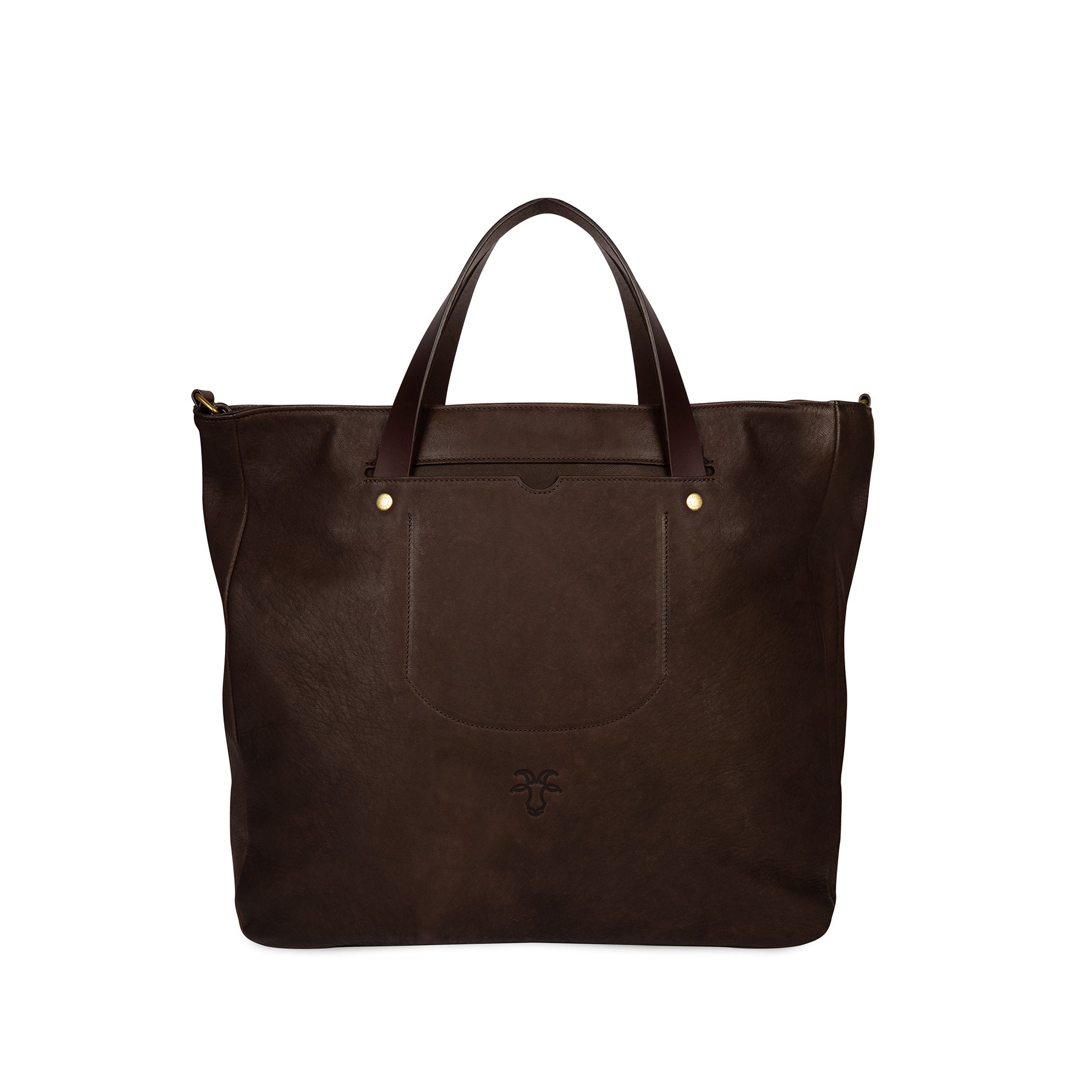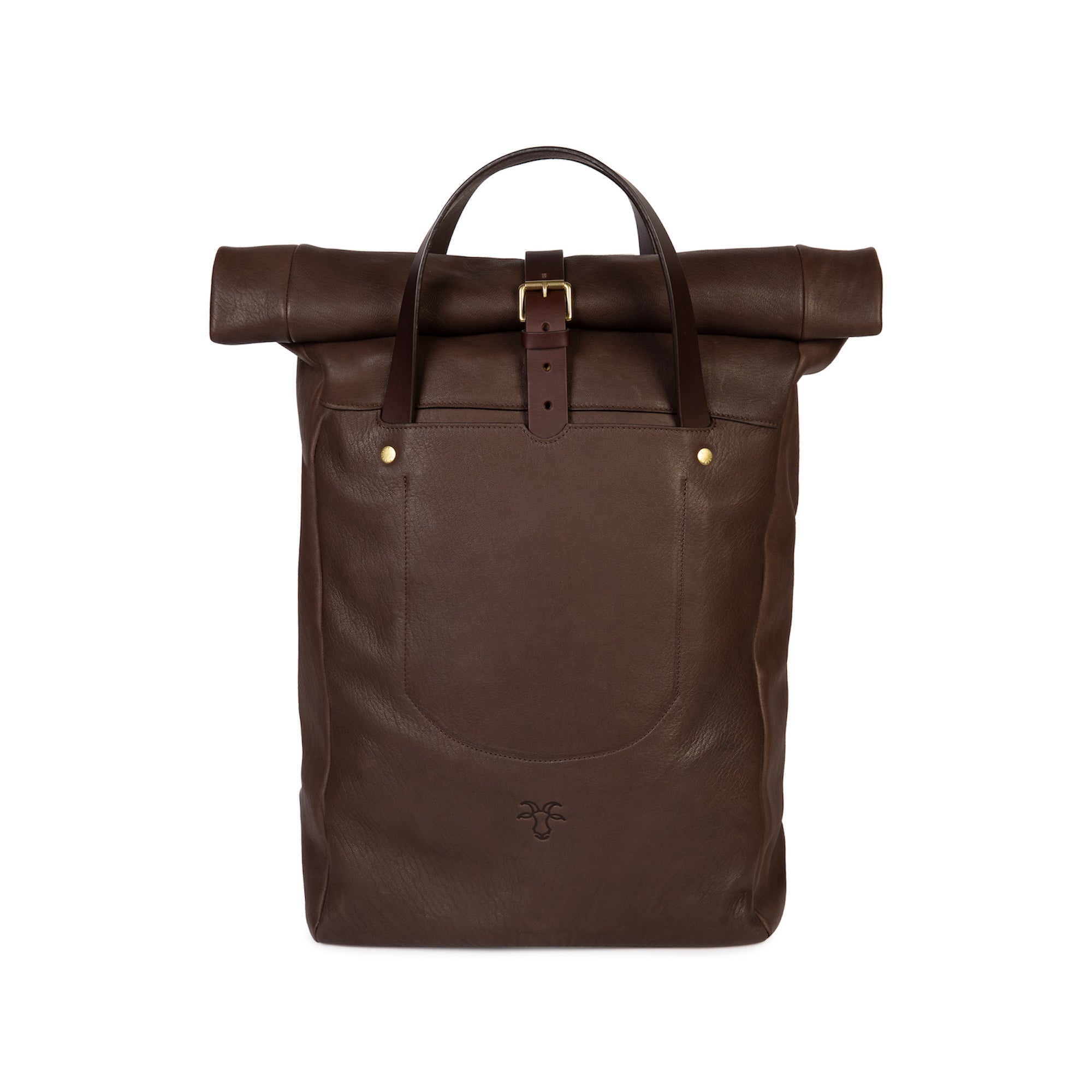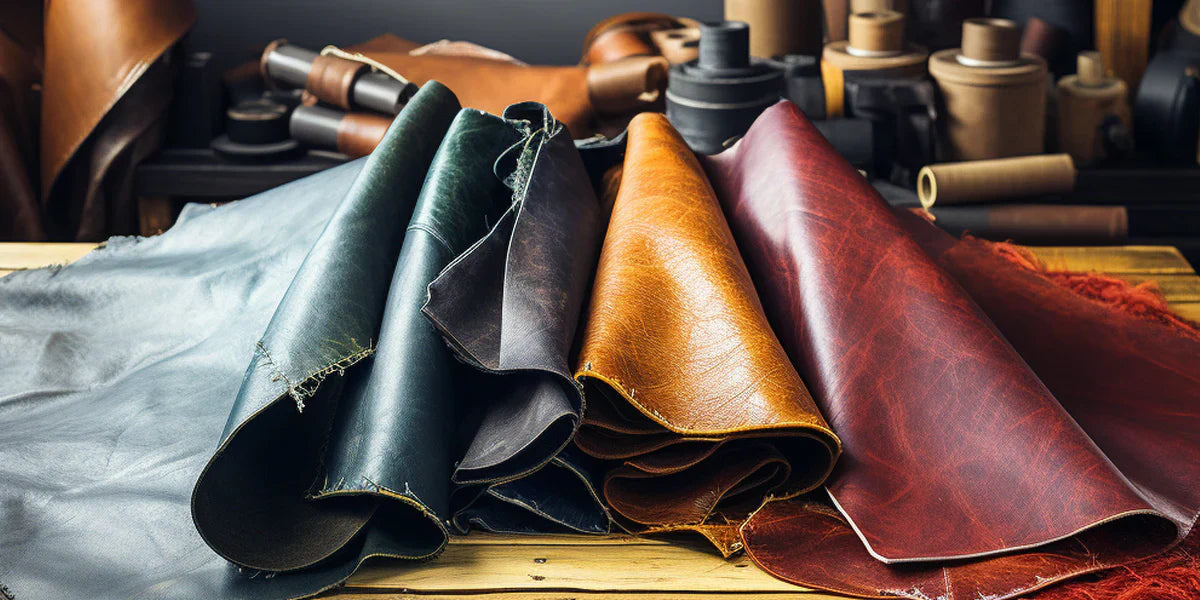Leather has been used by humans for centuries. It graces catwalks, features in some of the most revered mid-century furniture and has even been discovered at excavation sites dating back thousands of years.
Aside from its versatility and aesthetic appeal, leather’s durability is a key factor in what makes it such a popular material. But what is the best leather to make bags with? And why should you choose full grain over genuine leather? In this article, we seek to clear things up by explaining what makes the most durable leather.
What type of leather is the most durable?
Many aspects of leather contribute to its overall durability. One of the key factors that determine its characteristics is the animal that it has come from.
Cow leather
Cow leather is one of the most common types of leather. It is known for its durability and strength, making it suitable for a wide range of applications such as furniture, footwear, and accessories. Cow leather is typically thick, tough, and resistant to abrasion, making it highly durable and long-lasting.
Goat leather
When it comes to cow vs goat leather, goat leather is generally lighter and softer. It is known for its flexibility and suppleness, making it a popular choice for garments, gloves, and accessories. While goat leather is not quite as durable as cow leather, it still possesses surprising strength and resistance to wear and tear, meaning goat leather products can last for decades if looked after.
Deer leather
Deer leather is known for its softness and luxurious feel. It is commonly used for high-end fashion items such as shoes, jackets, and bags. Comparing deer leather to cow leather, it has good durability, but it may not be as strong. It is important to note that durability can vary depending on the specific tanning and processing methods used.
Exotic leather
Exotic leather refers to leather made from the hides of relatively rare animals or animals that are seldom used for leather. Examples include alligator, crocodile, snake, ostrich, and lizard leather. Exotic leathers are known for their unique textures, patterns, and aesthetic appeal. The durability of exotic leathers can vary depending on the specific type and quality, but in general, they are considered to be durable and long-lasting.
Eco leather
Eco leather, also known as synthetic leather or faux leather, is a man-made alternative to traditional animal-based leather. It is designed to mimic the look and feel of animal leather while offering certain advantages such as being vegan-friendly. The durability of eco-leather can vary depending on the manufacturing process and materials used. High-quality eco leathers can be quite durable, but they usually don’t match the longevity of animal leathers.
Does the grain of leather affect its durability?
When talking about the grain of leather, we are referring to the composition and appearance of the hide. The grain of leather is based on which layer of hide it comes from and how it is processed. These factors can, therefore, have an impact on the durability of the leather.
Full-grain leather
Full-grain leather is the most durable type of leather thanks to it's natural grain and thick structure. It's also the least processed leather and is what we use here at Billy Tannery.
By retaining its natural grain, full-grain leather embraces the imperfections of the hide, such as scars, insect bites, and wrinkles. These characteristics make each piece unique. The natural grain also provides strength and durability to the leather, making it resistant to wear, tearing, and moisture. Over time, full-grain leather develops a patina that adds to its character and enhances its durability.
Top-grain leather
Top-grain leather is derived from the top layer of the hide, where the natural grain is present. However, it undergoes a process called splitting to remove any imperfections and create a more uniform appearance. Top-grain leather is still considered durable but may not have the same level of strength and longevity as full-grain leather. It is often used in high-quality leather goods and upholstery.
Genuine leather
Genuine leather is a term commonly used to describe a type of leather, but it can be misleading. It refers to leather that is made from the lower layers of the hide, typically from cowhide. Genuine leather products are usually made from the leather leftover from the manufacture of high-end items.
While genuine leather is real leather, its durability can vary. It is often thinner, has more imperfections, and undergoes more processing. As a result, genuine leather may not have the same strength, longevity, or resistance to wear and tear as higher-grade leather.
Split leather
Split leather comes from the lower layers of a hide that have been separated from the top grain. Split leather is generally considered to be of poorer quality compared to full-grain or top-grain leather. It is less durable, less resistant to wear and tear, and tends to stretch or deform more easily. To make it more usable, split-grain leather is often sanded, buffed, or processed to create a smoother surface. Sometimes, an artificial grain pattern is also embossed onto split leather to give it a more consistent appearance.
Suede
Suede is a type of leather that has a soft, napped surface. It is made from the inner split layer of the hide, typically from cowhide, lamb, or goat. The term ‘suede’ is often used to describe the finish or texture of the leather rather than a specific type of animal hide.
Suede leather is not as durable or resistant to wear as full-grain or top-grain leather. Its soft and delicate nature makes it more prone to damage, such as scuffs, stains, or watermarks. Suede is also more susceptible to dirt and requires special care and maintenance to keep it in good condition.
How to make leather more durable
The durability of leather also depends on how well it is cared for and maintained. Proper cleaning, conditioning, and protection can significantly extend the lifespan of any type of leather. Here are some top tips for making your leather products more durable:
- Clean them regularly: Remove dirt and dust using a soft, dry cloth or a leather-specific brush.
- Apply a leather conditioner: Do this periodically to keep the leather hydrated and prevent it from drying out and cracking.
- Make your leather waterproof: You can use a waterproofing or water-repellent spray specifically designed for leather.
- Avoid extreme heat and sunlight: Prolonged exposure can cause leather to fade, dry out, and become brittle.
- Handle with care: Treat leather items gently and avoid subjecting them to unnecessary stress or strain.
- Store in a cool, dry place: Avoid storing leather in plastic bags or airtight containers, as it needs to breathe. Use a cloth or dust bag instead.
- Have them professionally cleaned: For valuable or heavily soiled leather items, seek out a professional with the right tools and expertise.
Here at Billy Tannery, we use sustainably sourced goat and deer leather to make beautiful products such as our Rolltop Backpack and leather aprons. All our leather is vegetable tanned at our micro tannery in the Midlands and we work with two small workshops in the UK for our finishing processes. You can find out more about our leather and what makes it so special in our deerskin leather guide and goat leather guide.


































